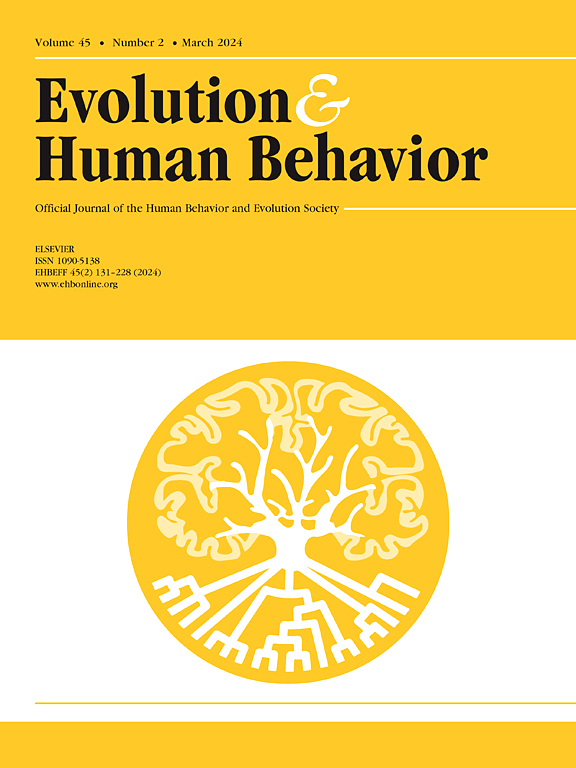情绪性眼泪:它们是什么以及它们是如何工作的
IF 3.2
1区 心理学
Q1 BEHAVIORAL SCIENCES
引用次数: 0
摘要
尽管从神经生物学和行为学的角度对情绪性眼泪有很多了解,但情绪性眼泪的产生及其引发的反应敏感地依赖于一套丰富的计算方法——迄今为止很少受到关注。这篇评论文章旨在弥补这一差距。情绪撕裂发生在消极事件(如受伤)和积极事件(如成就)中。泪水的发作似乎是由泪水者对某些内在或外在现象的消极或积极价值的主观归因而统一起来的。了解事物、有机体、事件和状态在多大程度上增强或削弱一个人的前景——事物的价值——对人类和其他有机体来说是一件紧迫的事情。价值信息是为内部消费而产生的,供焦点个体的行为调节机制使用。但是有些评价是可以获得的,除此之外,通过撕裂和其他形式的语言和非语言交流。撕裂可能是对接受者(撕裂目标)的一种含蓄的请求,以尽量减少由自然、第三方或撕裂目标本身强加给撕裂者的成本——当撕裂者的能力或所需资金低于撕裂目标时,这种情况很常见。此外,撕裂可能会促使撕裂目标推断和记录撕裂者积极或消极地重视哪些事情。在这里,我们描述了眼泪的特征,描述了弱势讨价还价的博弈论逻辑,概述了调节情绪性眼泪产生和反应的计算系统,并回顾了与信号传导假说相关的情绪性眼泪研究结果。本文章由计算机程序翻译,如有差异,请以英文原文为准。
Emotional tears: What they are and how they work
Although much is known about emotional tears from the perspectives of neurobiology and behavior, the production of emotional tears and the responses they elicit depend sensitively on a rich set of computations—one which has received little attention to date. This review article aims to close this gap. Emotional tearing occurs during negative events (e.g., injuries) and positive events (e.g., achievements). Episodes of tearing appear to be united by tearers' subjective imputation of negative or positive value to certain internal or external phenomena. Knowing the degree to which objects, organisms, events, and states of affairs enhance or diminish one's prospects—the value of things—is a pressing matter for humans and other organisms. Value information is produced for internal consumption, to be used by behavior-regulating mechanisms in the focal individual. But some evaluations are made available, in addition, to other people, through tearing and other forms of verbal and non-verbal communication. Tearing may function as an implicit plea for receivers (the tear targets) to minimize the costs imposed on the tearer by nature, by third-parties, or by the tear targets themselves—common when the tearer has lower formidability or wherewithal than tear targets do. In addition, tearing may exhort tear targets to infer and register which things the tearer values, positively or negatively. Here, we characterize tears, describe the game-theoretic logic of bargaining from a position of weakness, outline the computational systems that regulate the production of and responses to emotional tears, and review findings about emotional tearing that are relevant to the signaling hypothesis.
求助全文
通过发布文献求助,成功后即可免费获取论文全文。
去求助
来源期刊

Evolution and Human Behavior
生物-行为科学
CiteScore
8.30
自引率
9.80%
发文量
62
审稿时长
82 days
期刊介绍:
Evolution and Human Behavior is an interdisciplinary journal, presenting research reports and theory in which evolutionary perspectives are brought to bear on the study of human behavior. It is primarily a scientific journal, but submissions from scholars in the humanities are also encouraged. Papers reporting on theoretical and empirical work on other species will be welcome if their relevance to the human animal is apparent.
 求助内容:
求助内容: 应助结果提醒方式:
应助结果提醒方式:


